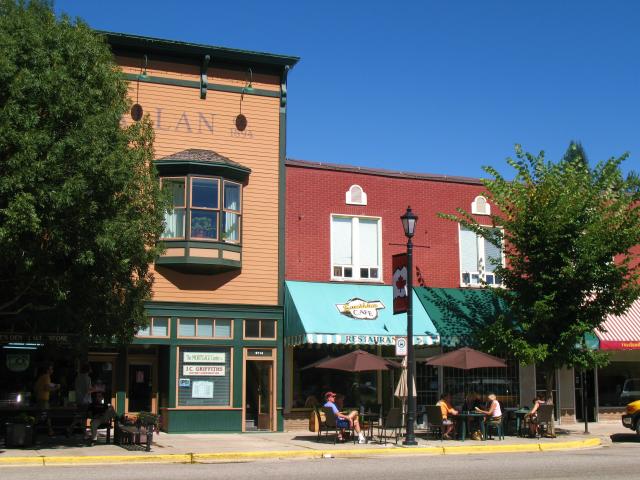Water meters, water meters, everywhere: the soggy saga continues
Water meters, water rates and the ramifications thereof were once again the highlight of city council this week, coming up on two separate agenda items. In a letter from Andy Talbot of Allanco Development Corporation ( which owns both the building housing Drift and Feather Your Nest as well as the Velvet Hotel building at the east end of the downtown strip), Talbot expressed concern about how the city’s water/sewer rates are calculated.
He also suggested a potential incentive system the city might implement to help building owners such as himself become more efficient in their water use.
Talbot’s beef around how water rates are calculated centred on the lumping together of multi-unit residential buildings and commercial properties. Under the current system, there is a base rate applied to this category of buildings based on the number of units in the building and then an additional charge based on actual water consumption.
“I believe that calculating non-residential users based on the number of units is punitive to downtown businesses. Non-residential users generally use much less water than residential users (no shower, no washer/dryer, limited or no lawns). My recommendation is to create a non-residential (commercial) rate that is (as it was prior to 2009), based on the number of meters not the number of units. This would make a difference,” wrote Talbot.
Talbot, in his second point, suggests that for high water use commercial operations, there should be a mechanism in place to allow commercial users to put a portion of their high water bills towards fixing their water use problems. For example, in Mr Talbot’s case a large quantity of the water consumption in his buildings is due to a non-recirculating heating and cooling system.
Although ultimately a motion was made and carried to refer the letter back to city staff, Talbot’s letter did set off a lively discussion among council on how to potentially deal with the issue.
Kathy Moore, who made the motion to refer to staff, spoke to her own motion.
“It’s important that we balance our need for good water conservation but also supporting our local businesses. I thought the letter had some good ideas on that.”
Councillor Smith suggested that the city look into creating some incentives to help businesses correct problems such as non-circulating heating and cooling systems, which use large volumes of water.
While the idea of introducing incentives to help businesses conserve water gained some support around the table and will be put to staff as part of their report back to council, it was pointed out that part of the reasoning behind the current water rates was to create just such an inventive.
Councillor Stradling noted that “the current bylaw is in place to penalize high water users. The letter presents the rate increase as the reason for the water bill increase. I’m sorry, but I can’t see that. The cost of the water is negligible. The 95 percent increase he is experiencing is due to increased consumption. That’s not a city problem; it’s a lack of wise use of our valuable resources. In other words, he now has an $1,800 incentive to find a way to reduce his consumption, and I think that’s the way the city should continue going. It’s not because the city has increased our rates dramatically. It’s because his water use has increased dramatically.”
Councillor Charlton agreed with that assessment in principle and suggested the root cause of the problem was not in the water rates but rather the formula the city uses for calculating water rates
“The fundamental problem here for Mr Talbot and other property owners in town that have more than one business in their building is that they are being charged on the number of businesses in the building and not the amount of water they use. That is simply not a reasonable way to charge our water rates. It`s the same issue that Esling Park Lodge and Golden City Manor had. They are charged on the number of units in the building and not the amount of water they use. This is an unrealistic rate structure for multi-unit buildings. We went through this discussion back in the spring, and it will come up again when we discuss the rates for next year.
Part of the problem for multi-unit residential and commercial property owners may stem from the fact that the playing field is not necessarily level among this group of properties.
Water meters were regulated by the City in the Water Service bylaw of 2000. This bylaw made it compulsory for multi-family, industrial, commercial and institutional properties to install water meters. Almost ten years after the bylaw was put in place, a number of these properties have yet to install a meter.
“Not to rush anything, but this bylaw has been in place since 2000 and soon it’ll be 2010 and we’re still not there,” said Councillor Moore, kicking off the discussion.
The lack of enforcement on the issue was brought up as a likely reason why some property owners haven`t yet bothered to install meters.
Councillor Charlton commented. “I think it’s just an example of lack of enforcement and it may be contributing to the idea in some people around town that if we wait long enough the City will back down and not enforce it. There may be some justification for that. If we want to follow this line and we expect people to have the meters installed, then we have to start enforcing.”
The question was put to interim CAO and Finance Manager Deb Timm as to when or if enforcement of this bylaw would happen. There was a somewhat fuzzy response from Timm and the Mayor that there are some complicating issues to that matter. However, sometime in the spring has been discussed as a time to start shutting off water to non-complying properties.
One of the complications may centre around the fact that the city itself is not entirely compliant with the bylaw, as noted by Councillor Charlton. “The city is the first place to start because there are a lot of city-owned buildings and parks that do not have meters installed.”
Following Councillor Moore’s suggestion that “perhaps there is a perception of a number of people in town that because we have so much water we don’t need to have meters. If they don’t see a huge benefit on what the water is going to cost, why should they do it?” The motion was made and carried to circulate information from the City to residents on the benefits and reasoning behind water meters and the current rate structure.
For more information on this matter, see City engineer Mike Thomas`s report on page 18 of the November 9th regular city council meeting agenda.























